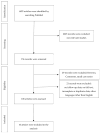Mohs Micrographic Surgery for Cutaneous Squamous Cell Carcinoma
- PMID: 39001454
- PMCID: PMC11240455
- DOI: 10.3390/cancers16132394
Mohs Micrographic Surgery for Cutaneous Squamous Cell Carcinoma
Abstract
Background: The first-line treatment of the localized form of cutaneous squamous cell carcinoma (cSCC) remains surgical excision. Either conventional excision (CE) with margins or Mohs micrographic surgery (MMS) may be preferred, depending on the risk factors of cSCC, the characteristics of the tumor, and the available technical facilities.
Methods: This article presents a systematic review of the current literature spanning from 1974 to 2023, comparing outcomes of cSCC treated with MMS versus cSCC treated with conventional excision.
Results: Out of the 6821 records identified through the database search, a total of 156 studies were screened, of which 10 were included in the review. The majority of the included studies showed that treatment of cSCC with MMS consistently exhibits a significantly lower risk of recurrence compared to treatment with CE. In addition, MMS is emerging as the preferred technique for the resection of cSCC located in aesthetically or functionally challenging anatomical areas.
Conclusion: The studies generally demonstrate that MMS is a safer and more effective treatment of cSCC than CE. Nevertheless, outcomes such as recurrence rates and cost-effectiveness should be assessed more precisely, in order to allow for a more tailored approach in determining the appropriate indication for the use of MMS.
Keywords: Mohs surgery; non-melanoma skin cancer; recurrence; squamous cell carcinoma; standard excision.
Conflict of interest statement
The authors declare that they have no competing interests.
Figures
Similar articles
-
Mohs Micrographic Surgery Efficacy for Solid Organ Transplant Head and Neck Cutaneous Squamous Cell Carcinoma.Otolaryngol Head Neck Surg. 2025 Apr;172(4):1286-1290. doi: 10.1002/ohn.1129. Epub 2025 Jan 10. Otolaryngol Head Neck Surg. 2025. PMID: 39791938
-
Outcomes of Mohs micrographic surgery for periocular squamous cell carcinoma.Eur J Ophthalmol. 2024 Sep;34(5):1506-1510. doi: 10.1177/11206721231225497. Epub 2024 Jan 17. Eur J Ophthalmol. 2024. PMID: 38232980
-
Recurrence rates of cutaneous squamous cell carcinoma of the head and neck after Mohs micrographic surgery vs. standard excision: a retrospective cohort study.Br J Dermatol. 2019 Aug;181(2):338-343. doi: 10.1111/bjd.17188. Epub 2018 Oct 28. Br J Dermatol. 2019. PMID: 30199574
-
A review of Mohs micrographic surgery for skin cancer. Part 3: Squamous cell carcinoma.Clin Exp Dermatol. 2022 Oct;47(10):1765-1773. doi: 10.1111/ced.15187. Epub 2022 Jul 26. Clin Exp Dermatol. 2022. PMID: 35315541 Review.
-
Mohs Micrographic Surgery and Improved Survival in Skin Cancer: A Narrative Review.Dermatol Ther (Heidelb). 2025 Jun;15(6):1283-1306. doi: 10.1007/s13555-025-01410-5. Epub 2025 Apr 20. Dermatol Ther (Heidelb). 2025. PMID: 40254689 Free PMC article. Review.
Cited by
-
Margins in head and neck non-melanoma skin cancer surgery: clinical/pathological criteria and their impact on oncological outcomes and therapeutic choices. A systematic review.Acta Otorhinolaryngol Ital. 2025 May;45(Suppl. 1):S121-S136. doi: 10.14639/0392-100X-suppl.1-45-2025-N1121. Acta Otorhinolaryngol Ital. 2025. PMID: 40400382 Free PMC article.
-
Vision Transformers for Low-Quality Histopathological Images: A Case Study on Squamous Cell Carcinoma Margin Classification.Diagnostics (Basel). 2025 Jan 23;15(3):260. doi: 10.3390/diagnostics15030260. Diagnostics (Basel). 2025. PMID: 39941191 Free PMC article.
-
A Successful Nodular Basal Cell Carcinoma Defect Closure On The Mid-Cheek Using Modified Mini Cheek Advancement Flap.Cancer Manag Res. 2025 Mar 8;17:499-507. doi: 10.2147/CMAR.S513161. eCollection 2025. Cancer Manag Res. 2025. PMID: 40084188 Free PMC article.
References
Publication types
LinkOut - more resources
Full Text Sources
Medical


